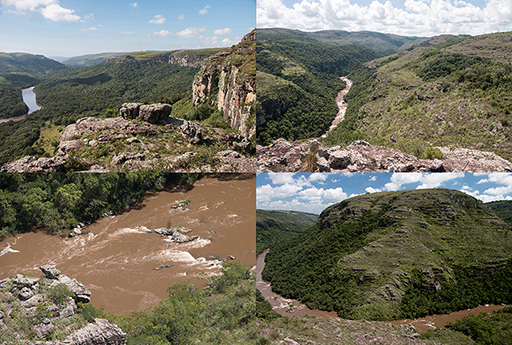he source of the Iapó (from Tupi “river that overflows, river that floods”) is in Serra das Furnas, in the Piraí do Sul municipality, at an altitude of 1,200 meters. Its mouth is at the Tibagi River, at an altitude of 763 meters, in the Tibagi municipality. It is considered one of the principal tributaries on the right bank of the Tibagi, and is 120 kilometers long.
With its source on the First Paranaense Plateau, the Iapó breaks the Devonian Escarpment to form the Guartelá Canyon, before reaching the Second Plateau. The first part of the river runs through flood plains. During floods, the travelers had to make camp on the left bank and wait for the waters to recede before they were able to ford the river.
The river gave its name to the stopping place (pouso) used by the cattle drivers along Caminho de Tropas, and, later on, a village, where a chapel was built and dedicated to Nossa Senhora Sant’Anna. In 1774, Pouso do Iapó was elevated to the category of Parish of Sant'Anna do Iapó and in 1789 the Parish was renamed Vila Nova de Castro, in homage to Martinho de Mello e Castro, then Secretary of Overseas Commerce of Portugal. A little while after Paraná ceased being a Province of São Paulo in 1857, Castro was elevated to the category of city.
